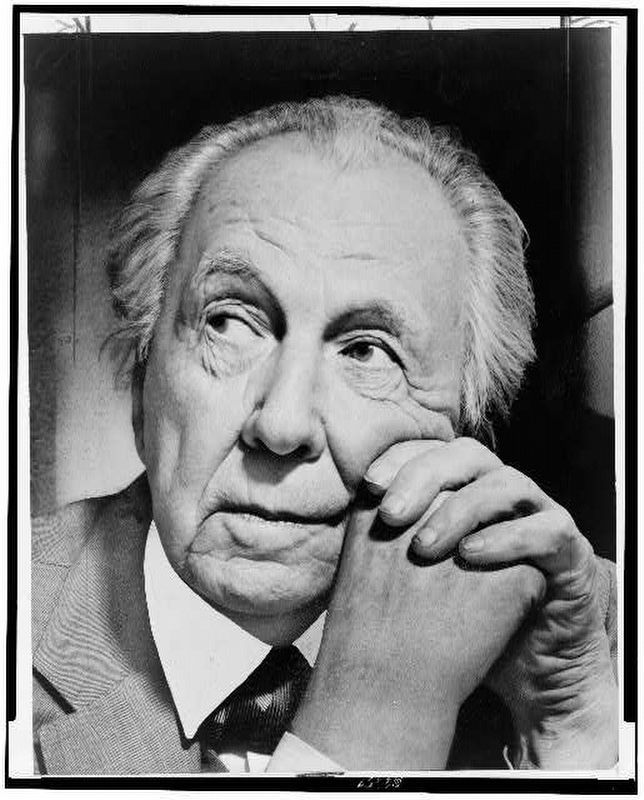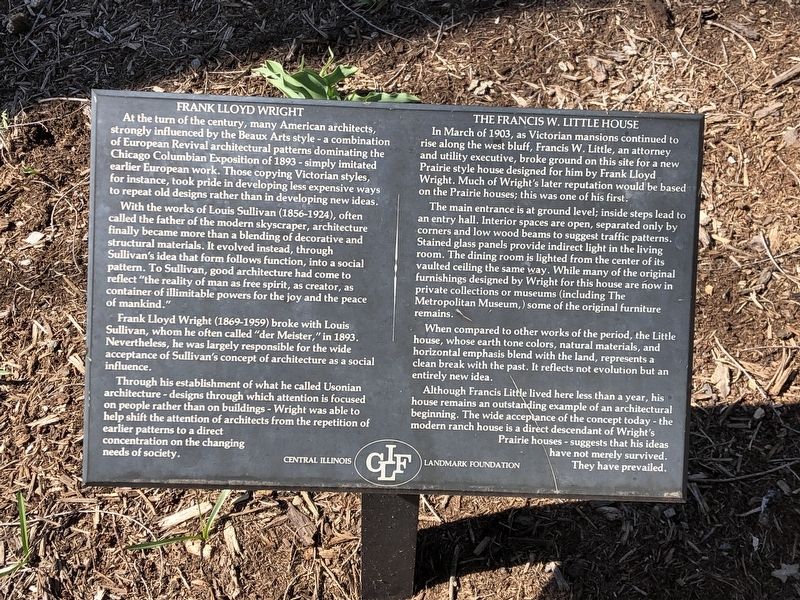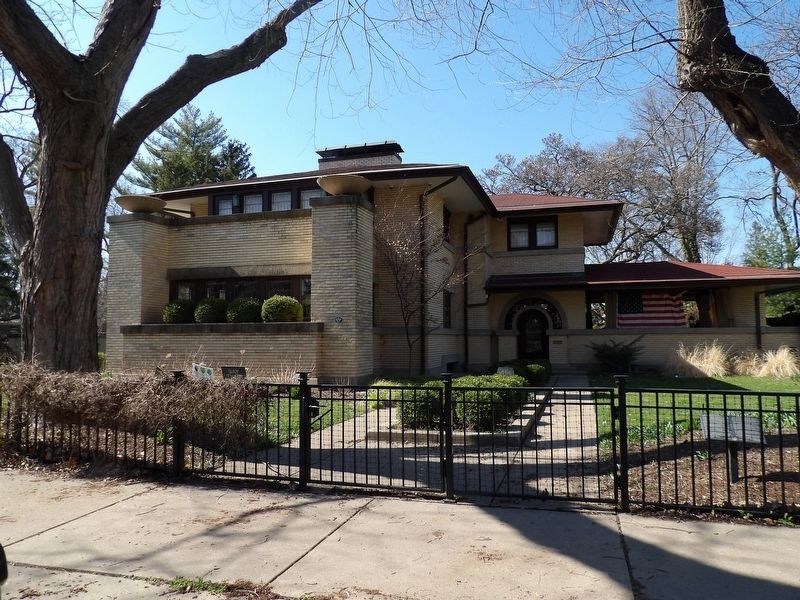Peoria in Peoria County, Illinois — The American Midwest (Great Lakes)
Frank Lloyd Wright / The Francis W. Little House
Inscription.
Frank Lloyd Wright At the turn of the century, many American architects, strongly influenced by the Beaux Arts style – a combination of European Revival architectural patterns dominating the Chicago Columbian Exposition of 1893 – simply imitated earlier European work. Those copying Victorian styles, for instance, took pride in developing less expensive ways to repeat old designs rather than in developing new ideas.
With the works of Louis Sullivan (1856-1924), often called the father of the modern skyscraper, architecture finally became more than a blending of decorative and structural materials. It evolved instead, through Sullivan's idea that form follows function, into a social pattern. To Sullivan, good architecture had come to reflect "the reality of man as free spirit, as creator, as container of illimitable powers for the joy and the peace of mankind."
Frank Lloyd Wright (1869-1959) broke with Louis Sullivan, whom he often called "der Meister," in 1893. Nevertheless, he was largely responsible for the wide acceptance of Sullivan's concept of architecture as a social influence.
Through his establishment of what he called Usonian architecture – designs through which attention is focused on people rather than on buildings – Wright was able to help shift the attention of architects from the repetition of earlier patterns to a direct concentration on the changing needs of society.
The Francis W. Little House In March of 1903, as Victorian mansions continued to rise along the west bluff, Francis W. Little, an attorney and utility executive, broke ground on this site for a new Prairie style house designed for him by Frank Lloyd Wright. Much of Wright's later reputation would be based on the Prairie houses; this was one of his first.
The main entrance is at ground level; inside steps lead to an entry hall. Interior spaces are open, separated only by corners and low wood beams to suggest traffic patterns. Stained glass panels provide indirect light in the living room. The dining room is lighted from the center of its vaulted ceiling the same way. While many of the original furnishings designed by Wright for this house are now in private collections or museums (including The Metropolitan Museum,) some of the original furniture remains.
When compared to other works of the period, the Little house, whose earth tone colors, natural materials, and horizontal emphasis blend with the land, represents a clean break with the past. It reflects not evolution but an entirely new idea.
Although Francis Little lived here less than a year, his house remains an outstanding example of an architectural beginning. The wide acceptance of
the concept today - the
modern ranch house is a direct descendant of Wright's
Prairie houses - suggests that his ideas
have not merely survived.
They have prevailed.
Erected by Central Illinois Landmark Foundation.
Topics. This historical marker is listed in this topic list: Architecture. A significant historical year for this entry is 1903.
Location. 40° 41.585′ N, 89° 36.954′ W. Marker is in Peoria, Illinois, in Peoria County. Marker is at the intersection of West Moss Avenue and North Institute Place, on the right when traveling west on West Moss Avenue. Touch for map. Marker is at or near this postal address: 1505 W Moss Ave, Peoria IL 61606, United States of America. Touch for directions.
Other nearby markers. At least 8 other markers are within walking distance of this marker. Pettengill-Morron House (approx. ¼ mile away); Woodward Home (approx. ¼ mile away); Bradley University Football (approx. 0.3 miles away); Bradley University Home Plate (approx. 0.3 miles away); The Bradley Homestead (approx. 0.6 miles away); Moss-High Historic District / Bush House (approx. 0.7 miles away); Erastus D. Hardin House (approx. 0.8 miles away); The Easton Fountain (approx. 0.9 miles away). Touch for a list and map of all markers in Peoria.
Also see . . .
1. Frank Lloyd Wright. Wikipedia entry on the prolific, innovative and influential architect. (Submitted on April 11, 2023, by Duane and Tracy Marsteller of Murfreesboro, Tennessee.)

Al Ravenna, New York World-Telegram, via Library of Congress Prints & Photographs Div. (Public Domain), 1954
3. Frank Lloyd Wright (1867-1959)
Called "the greatest American architect of all time" by the American Institute of Architects, Wright designed more than 1,000 structures over a 70-year career.
2. Little Residences. Frank Lloyd Wright designed not one but two houses for Francis W. and Mary Little. This site contains several photographs of both houses as well as furniture Wright designed for them. (The Wright Library) (Submitted on April 11, 2023, by Duane and Tracy Marsteller of Murfreesboro, Tennessee.)
Credits. This page was last revised on April 11, 2023. It was originally submitted on April 11, 2023, by Duane and Tracy Marsteller of Murfreesboro, Tennessee. This page has been viewed 299 times since then and 70 times this year. Photos: 1, 2, 3. submitted on April 11, 2023, by Duane and Tracy Marsteller of Murfreesboro, Tennessee.

